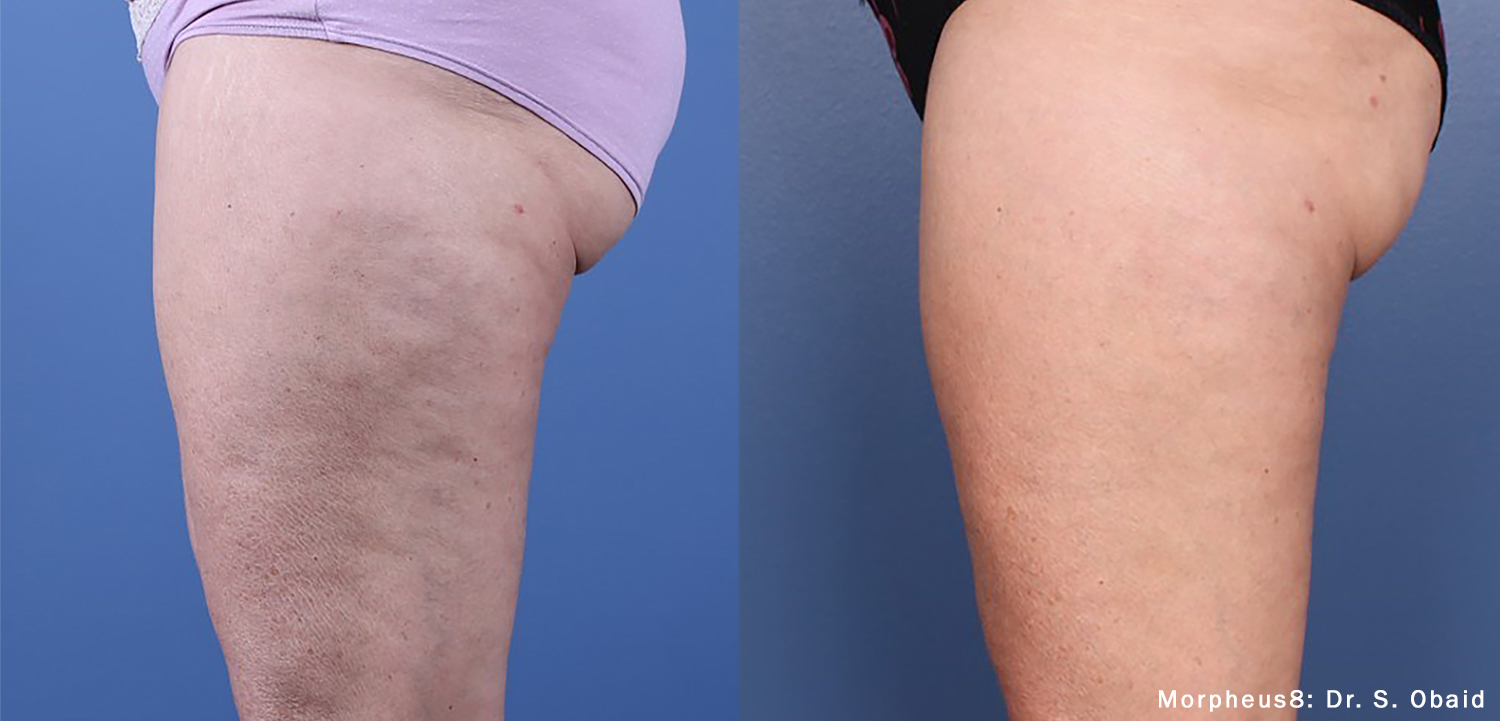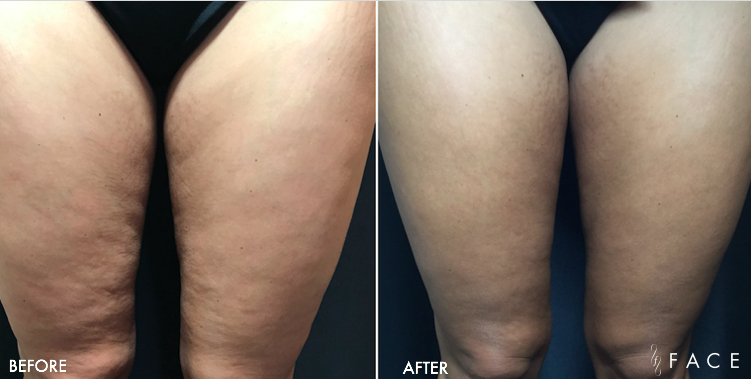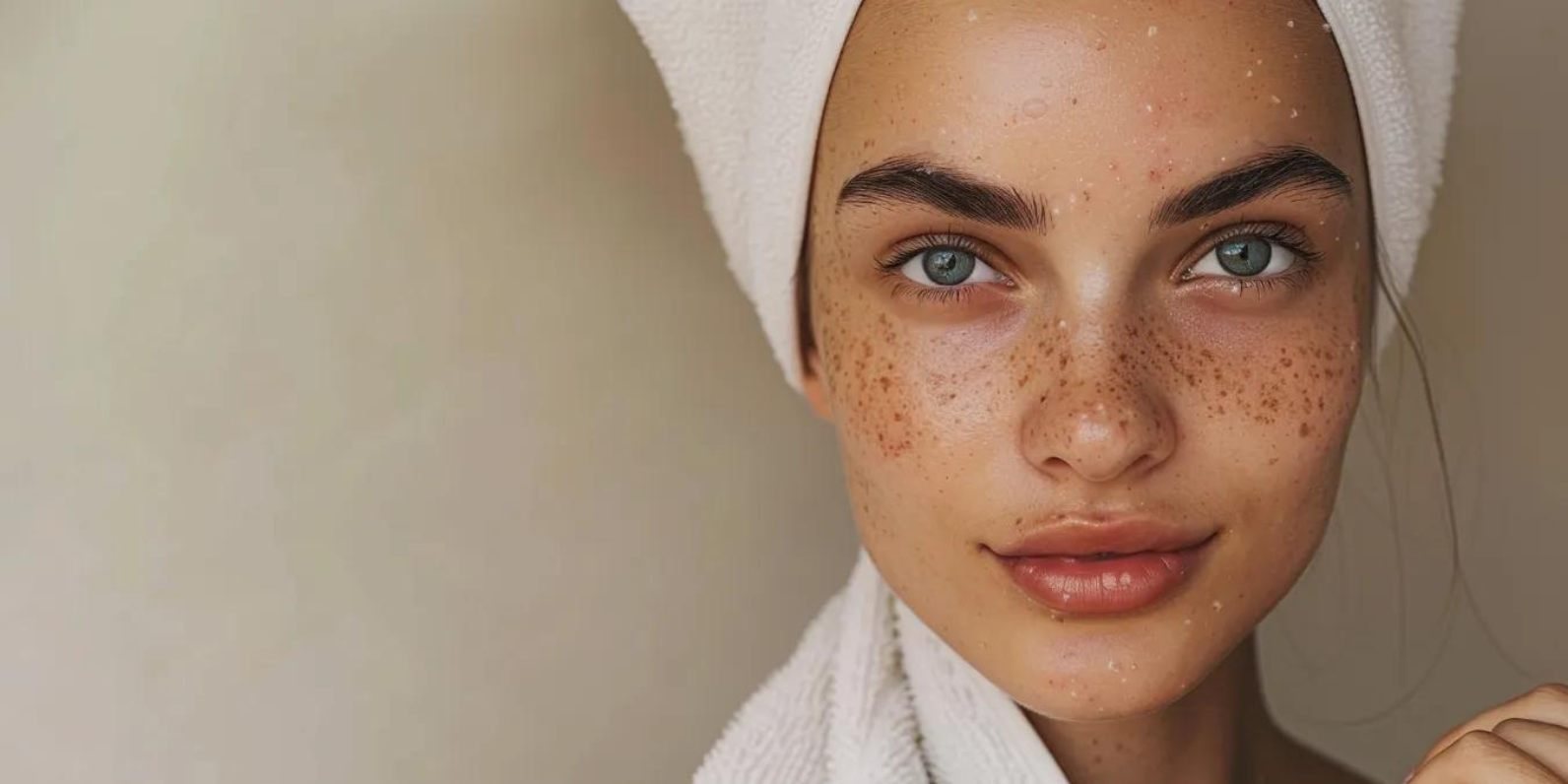What is Cellulite?
Cellulite forms when fibrous bands develop and adhere to the skin and muscle, trapping fat between them. This combination of tethered dimples and bulging fat between them gives cellulite its lumpy, uneven appearance.
While cellulite development happens naturally and is not a health risk, many people don’t like the appearance and would like to have it removed. We offer several options for cellulite treatments that can give you the results you’re looking for.
Types of Cellulite (Grading System)
Cellulite is often categorized into different grades based on its severity. Understanding these grades can help identify the right treatment approach.
- Grade 0: No visible cellulite, even when the skin is pinched.
- Grade 1: Mild cellulite that is only visible when the skin is pinched. The skin may have a slight orange peel or cottage cheese texture.
- Grade 2: Moderate cellulite that is visible when standing but not when lying down. The dimples are more pronounced, even without pinching.
- Grade 3: Severe cellulite that is visible whether standing or lying down. The skin has deep depressions, making the surface uneven with noticeable peaks and valleys.
Are there different types of cellulite?
Yes, cellulite presents in different types categorized by a grading system from mild to severe. These include Grade 0 (no visible cellulite), Grade 1 (only visible when pinched), Grade 2 (visible when standing), and Grade 3 (visible both standing and lying). Understanding cellulite different types helps determine which treatment is most appropriate.
What Causes Cellulite?
There are five overall major contributing factors of cellulite, including enlarged fat chambers, damaged collagen fibers, loss of skin elasticity, poor blood flow, and metabolic waste accumulation.
The good news is there are breakthrough innovations that can non-invasively address these challenges.
What primarily causes cellulite, Milady?
Cellulite is primarily caused by the structure of connective tissues that tether the skin to muscle, trapping fat in between. In “Milady” cosmetology education, the emphasis is on fibrous bands pulling down on the skin while fat pushes up, causing dimples. Hormonal changes, poor circulation, and genetic predisposition also play key roles in the formation of cellulite.
Myths and Misconceptions About Cellulite
There are many misconceptions about cellulite. One common myth is that only overweight people have cellulite. In reality, even thin individuals can develop cellulite. It’s more about how fat is distributed under the skin than the amount of fat a person has.
Another myth is that exercise alone can eliminate cellulite. While exercise can help reduce the appearance of cellulite by improving muscle tone and skin elasticity, it won’t completely remove it. The structure of the connective tissue beneath the skin is the primary cause.
Lastly, some believe that creams and lotions can permanently get rid of cellulite. While some products may temporarily improve the skin’s appearance, they cannot penetrate deep enough to affect the fat and connective tissue that cause cellulite.
Hormonal and Genetic Factors
Hormones play a significant role in how cellulite forms. Estrogen, a key female hormone, impacts how fat is stored in the body. Higher estrogen levels during pregnancy or with birth control use cause fat to collect in areas like the thighs, buttocks, and hips. This buildup pushes fat against connective tissues, creating the dimpled effect of cellulite.
As estrogen decreases with age, blood flow to the skin reduces. This leads to less collagen production and weaker skin. As a result, cellulite becomes more visible. Lower circulation also affects how fat cells behave under the skin, worsening the appearance.
Genetics also play a role. If your family has a history of cellulite, you’re more likely to have it, too. Genetic factors influence how fat cells and connective tissues are distributed under the skin. Even with a healthy lifestyle, your genetics can make cellulite more prominent.
Risk Factors for Cellulite
Cellulite affects both men and women, but it’s more common in women. One of the main reasons is that women’s fat distribution is concentrated in the thighs, hips, and buttocks. These are the most common areas for cellulite. Men have a different pattern of fat storage, which makes cellulite less noticeable.
As people age, skin loses elasticity. This makes cellulite more prominent. Thinner, less flexible skin reveals the lumps and dimples of cellulite more easily. Even if someone is physically fit, age-related changes in the skin’s collagen and elastin contribute to the appearance of cellulite.
Weight gain can increase the visibility of cellulite, but it’s not the only factor. Even people who are lean can have cellulite due to how their fat and connective tissues are arranged under the skin. Inactivity and pregnancy can also make cellulite worse, as they affect how the body stores fat and supports skin elasticity.
Why don’t men have cellulite as often as women?
Men don’t have cellulite as often because of differences in skin structure, fat distribution, and connective tissue patterns. Male skin is thicker and their collagen bands form a crisscross pattern, which holds fat in more securely. Women’s collagen bands run vertically, making it easier for fat to push through and create dimples.
What Treatments Are Available to Treat Cellulite?
We offer three different types of treatment to deal with cellulite. These are the top options in the work and they each work in a different way, and each one may work better for you depending on your individual needs, expectations, and goals.
Emtone™
This FDA-approved, one-of-a-kind treatment uses two different kinds of energy, radiofrequency (RF) and mechanical (Targeted Pressure Energy), to address all the major causes of cellulite: loss of skin elasticity, lack of collagen, poor blood flow, enlarged areas of fat, and metabolic buildup. The combination of two types of energy creates heat, which triggers the development of collagen and healing factors that firm the skin. They also create mechanical energy that encourages circulation and clears out metabolic byproducts.
Broader Treatment Options for Cellulite
While there are many treatments available, it’s important to understand the variety of approaches. Some treatments are more invasive, while others are non-surgical and focus on improving the skin’s appearance temporarily.
- FDA-approved treatments like Cellfina®, Cellulaze®, and Qwo® target the underlying connective tissue that causes cellulite. These treatments can provide longer-lasting results by breaking up the fibrous bands beneath the skin.
- Laser and Radiofrequency (RF) treatments use heat to stimulate collagen production, which improves skin elasticity and reduces the appearance of dimples. These treatments also help tighten the skin.
- Subcision is a procedure where a needle is inserted under the skin to break up the connective bands that create the dimpled effect. Results can last up to two years in some cases.
Though many of these treatments reduce cellulite, they are not permanent. Follow-up treatments may be needed to maintain results.
Topical Treatments and At-Home Remedies
While professional treatments can be effective, some people prefer at-home solutions and topical treatments to reduce the appearance of cellulite.
- Caffeine creams are popular because caffeine temporarily dehydrates fat cells, making them less visible. Applying these creams regularly can give the skin a smoother appearance, though results are temporary.
- Retinol-based creams can thicken the skin over time, which helps reduce the visibility of cellulite. However, these products need to be used for at least six months to see any noticeable difference.
- Dry brushing is a method where a stiff-bristled brush is used to massage the skin. This increases blood circulation and helps temporarily reduce the appearance of cellulite by puffing up the skin.
Though these methods can help, it’s important to remember that they offer temporary improvement and cannot fully remove cellulite.









